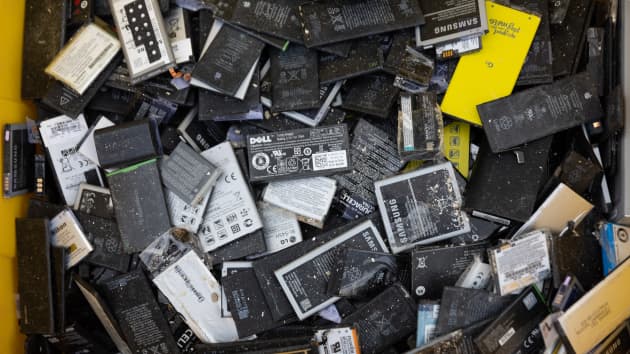Kategori : ELECTRICITY ENERGY NEWS, ENERGY AGENDA NEWS - Tarih : 21 December 2020
Inside every smartphone and tablet lies a dense brick with a dark and complex history: its battery. The lithium that ferries charge back and forth likely started out in South American salt flats, where months of evaporation consumes millions of tons of water in some of the world’s driest regions.
The cobalt that buffers the material against the ravages of daily recharging probably came from the Democratic Republic of the Congo, where children have allegedly been maimed and killed extracting it from the ground. To gather the assorted atoms and fashion them into a working battery may have required thousands of people from perhaps a dozen countries. Then, after a few years of use, spent  devices often end up in landfills and incinerators.
devices often end up in landfills and incinerators.
As lithium-ion batteries stand poised to jump from handheld devices into cars, trucks and homes, entrepreneurs and academics are racing to find a way to reuse the hard-won materials. Investors are betting millions that a Nevada company, Redwood Materials, can mine electronic waste for metals. A competitor, Li-Cycle, aims to crack the logistical puzzle of transporting batteries. Others are developing the technology to rejuvenate dead batteries without breaking them down fully. By attacking the problem on all fronts, the teams work toward one goal: transforming exhausted batteries into a valuable resource.
“We’re spending all of this money making batteries, making chemicals, and then we’re burning them at the end of the cycle,” says Tim Johnston, Li-Cycle co-founder and executive chairman. “That’s not right.”
Industry insiders speak with excitement and trepidation of a looming battery “tsunami.” Globally people already toss out more than 500,000 tons of lithium batteries today, according to Ajay Kochhar, Li-Cycle co-founder and president, mostly in the form of small electronics. But as the world transitions to an electric economy, its appetite for lithium-ion bricks is projected to increase tenfold by 2030. Most of that explosion will be driven by electric vehicles, which carry batteries weighing more than 1,000 pounds. “We’re at the tip of the iceberg,” Kochhar says.
Kochhar and others see that problem as an opportunity to replace today’s fragile and problematic supply chain with a more “circular” system, one that builds the next generation of batteries from the materials of the last generation. And they won’t be recycling just for the sake of recycling. The market for recycling lithium-ion batteries alone could be worth $18 billion annually by 2030, Statista estimates, up from $1.5 billion in 2019.
Source: CNBC





